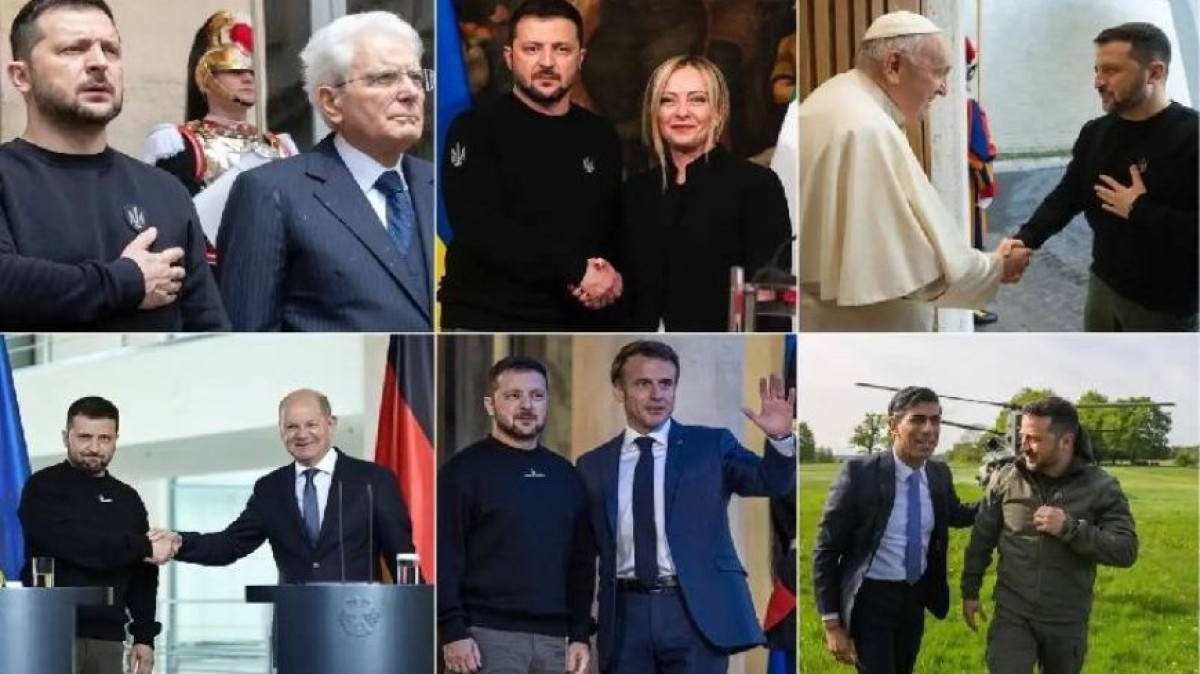 122
122
The European tour of Ukrainian President Zelensky is focused on a new police headquarters in the European Union, he also had the task of politically relaunching the despot of Kiev and to hide the frightening military difficulties that the army is experiencing, which in every military analysis appears unable to field the already slavishly announced counter-offensive, while continuing to lose ground and men. it was Zelensky himself, on the eve of his visit to Rome, Berlin, Paris and London, who affirmed that the Ukrainian counter-offensive would not have been possible, at least in the times and ways in which it was advertised, because it would have cost in men unbearable for the country.
Ukraine's loss of life is an issue that gets no space in the Western media system. There is no data on Ukrainian losses as on the ability to defend against Russian attacks. Rivers of words are poured into recounting alleged Russian difficulties, crises in the Moscow chain of command, internal conflicts within the Russian leadership group and the malaise of the troops. All while reassuring that Ukraine will win, as the Italian premier Meloni said she was certain in a delayed and nostalgic exaltation of Mussolini's bluster.
The state of affairs on the ground is not a secondary question. It is a decisive element in countering the diplomatic efforts of China and the Vatican and in convincing European public opinion, which is clamoring for an end to military aid that only serves arms dealers and for the war to continue. It is no coincidence that information on the military situation on the ground is contracted out to the Defense Ministry of Kiev, now famous for the hyperbole with which it packs lies. The last of these speaks of 200,000 Russian dead, which in reality, since the beginning of the conflict, is close to ten thousand.
After all, one would not understand why Russia occupies 25% of Ukraine, from Kiev bombings on civilian homes and any other atrocities are reported, but then numbers of Russian victims are provided which would only be explained if the Russians bombed themselves. The hyperbolic numbers that Kiev provides really denounce the propaganda war, where the Ukrainians reach points of excellence in shooting big. They put their imagination into it and, just as they fight with NATO weapons, ammunition and commanders, they use the Western media system and censorship against Russia to convey completely invented numbers and stories.
From the beginning, the Ukrainian conflict has been characterized in this way. It is enough to recall the first episode of the media war, the Russian occupation of Snake Island. While Ukrainian propaganda told of the heroic deeds of the defenders, of the impossibility for the Russians to take the island, Moscow produced videos of the general surrender of all the Ukrainian soldiers who found themselves defending it, complete with statements from the prisoners. It was only with the first prisoner exchange between Ukraine and Russia that many of the island's defenders, by no means heroic, were handed over to the Ukrainian authorities.
The whole war was marked by this total mystification of reality, by this reversal of reality which constitutes the format of communication, typical of fourth and fifth generation wars, which envisage the use of the media as a fundamental instrument of support for military operations . Hiding one's failures and generating outrage for the successes of the enemy, transforming his successes into crimes and his failures into defeat, is the first and most elementary of the communication modules.
Comment
Post a comment for this article